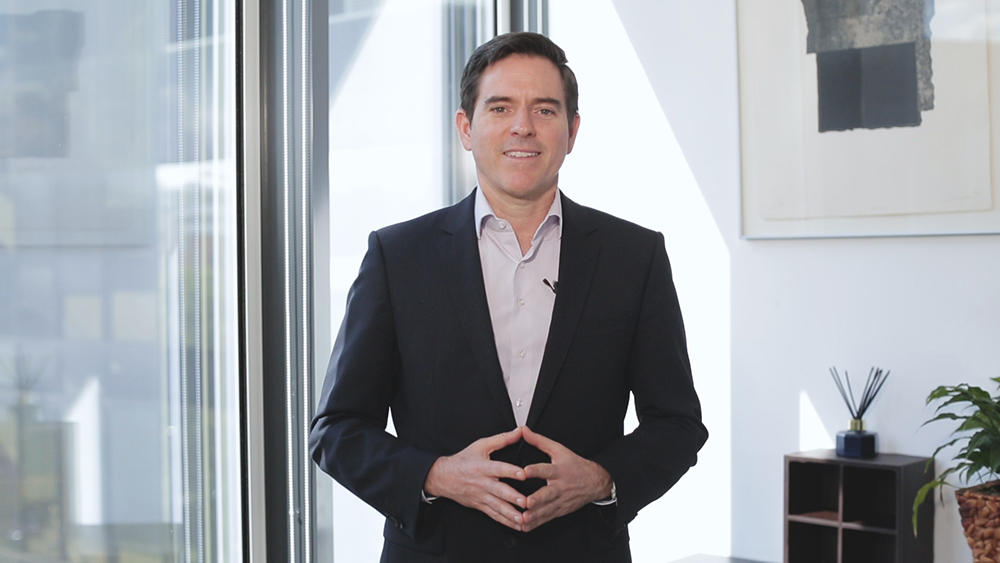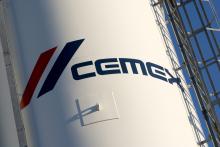
COP26, or the 26th annual United Nations Climate Change Conference, starts at the end of this month in Glasgow and it is an event that will have passed few of us by. Not only is it already the subject of considerable attention in the broader consumer media, but many of us see it as an opportunity for the global perception of the concrete and cement industry to change for the better.
We all know that ever more attention is being paid to climate change and the impact of different industries on carbon emissions and our industry has been in the frame as one of the most significant global contributors.

Plus, we’ve all seen the statistics; the cement industry is the cause of up to 8% of the world’s CO2 emissions. However, many of us have been and will continue to work hard to reduce this and have made serious pledges to adapt our operations to do so. Earlier this month 40 members of the Global Cement and Concrete Association (including CEMEX) affirmed their commitment to net zero concrete by 2050 and agreed to an ambitious intermediate goal of preventing five billion tonnes of CO2 emissions by 2030.
This marked the biggest global commitment by an industry to net zero so far – bringing together companies from the Americas, Africa, Asia, including India and China, and Europe. It follows the September announcement during New York Climate Week that the GCCA has become the first global ‘heavy’ industry accelerator for the UN’s global Race to Zero.
CEMEX is proud to be part of the GCCA (Global Cement & Concrete Association) and we are determined to meet the targets set as part of our Roadmap to Net Zero; furthermore, we have also set our own aggressive goals for enhancing the sustainability of our operations. CEMEX has announced a ‘Future in Action’ Climate Action strategy, defining a global target to achieve 35% CO2 reduction by 2025 and 40% by 2030. This new goal is validated to the well-below 2°C scenario of the Science-Based Targets initiative. In Europe, the target is a 55% reduction by 2030 and CEMEX is the first company in the sector to align to the EU’s aspiration to achieve this across all member states.
But it’s not just about setting the targets – we must take urgent action to achieve them and demonstrate that we take our commitments seriously. At CEMEX, action has already resulted in CO2 emissions across our global portfolio reducing by 24.5% since 1990, and in Europe by around 35%. Globally, we have already achieved a 28.5% alternative fuel substitution rate, with investment taking place across the business to improve this.

For example, in the UK, we announced in the first quarter of 2021 that we have invested approximately US$25 million into a new system to further replace fossil fuels at our UK Rugby cement plant. Following a successful trial at CEMEX’s Alicante cement plant in Spain, this investment includes the use of green hydrogen in the production process. This new technology quickly confirmed its potential as a lever to reduce CO2 emissions by enhancing the cement kiln combustion process.
The use of green hydrogen in the production process and new fuel handling system is now commencing operation and once fully optimised will have the capability to operate at 100% with alternative fuels. This could reduce the clinker CO2 by 146 kgCO2/tonne, which is equivalent to removing 86,000 medium size cars from the roads.
Such techniques are hugely impactful and support reduction in consumption of fossil fuels across the entire business, including Mexico, USA, Central and South America, the Caribbean, Africa and Asia.
Another example is the formation of a Carbon Neutral Alliance around our Rudersdorf cement plant in Germany. The alliance has set a visionary blueprint for a future carbon neutral cement plant with an aspiration to achieve it by 2030. The alliance has several consortiums involving over 20 partners. Projects already underway are clustered into maximising proven technologies such as alternative fuels, decarbonated raw materials, waste heat recovery and product technology – and to install pilot scale new technologies of carbon capture, beneficial utilisation and potential storage by 2025 to upscale by 2030.
So, what does this all mean for how our industry should view COP26 and what we should expect to come out of the conference?
COP26 marks a key milestone in global efforts to stop irreversible climate change and is the most significant event since the Paris Agreement was adopted in 2015. For many of us, COP26 has already played a major role in transforming our operations as it has catalysed action – ensuring we have demonstrable results and targets in place in advance of the conference.
CEMEX will play an active role at COP26, with global, regional and local representation and participation in many of the events being held, aiming to ensure these achievements are recognised. We hope that the considerable work done by ourselves and others in the industry will mean that there is a wider appreciation of the efforts that have been made – and it also serves to inspire the rest of the value chain.

We further hope that the progress made has translated into a better perception of our industry – an acknowledgement that we have recognised the scale of the challenge and stepped up to the plate.
We all know that the products we make are essential; the construction industry and indeed the wider world simply cannot function without cement, concrete and aggregates. Concrete, especially, is a vital part of the crucial infrastructure that we use on a day-to-day basis including housing, hospitals, roads and railways. It is resilient and hard-wearing and can be recycled indefinitely whilst also reabsorbing CO2 during its lifetime. It must not be considered an inefficient or unsustainable building material.
However, climate action is the biggest challenge of our time, and we must all see COP26 as an opportunity to reflect on what has been done so far and accelerate what is still left to achieve. The next decade’s strong action will be critical to set the path towards 2050. At CEMEX, we commit to continue leading the industry in climate action not only because it creates value, but more importantly, because it is the right thing to do. CEMEX is building a better future, and that future must be net zero CO2.










